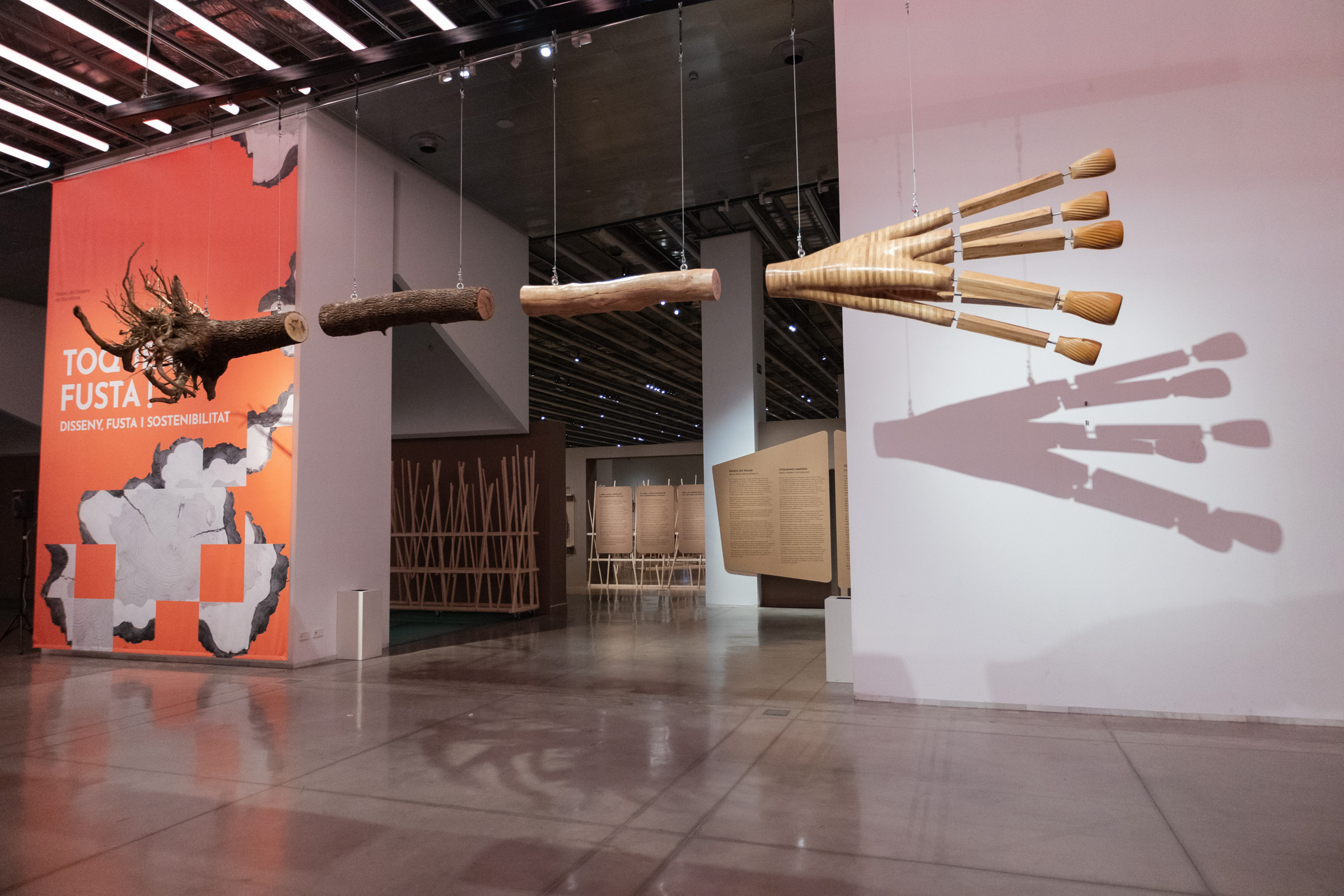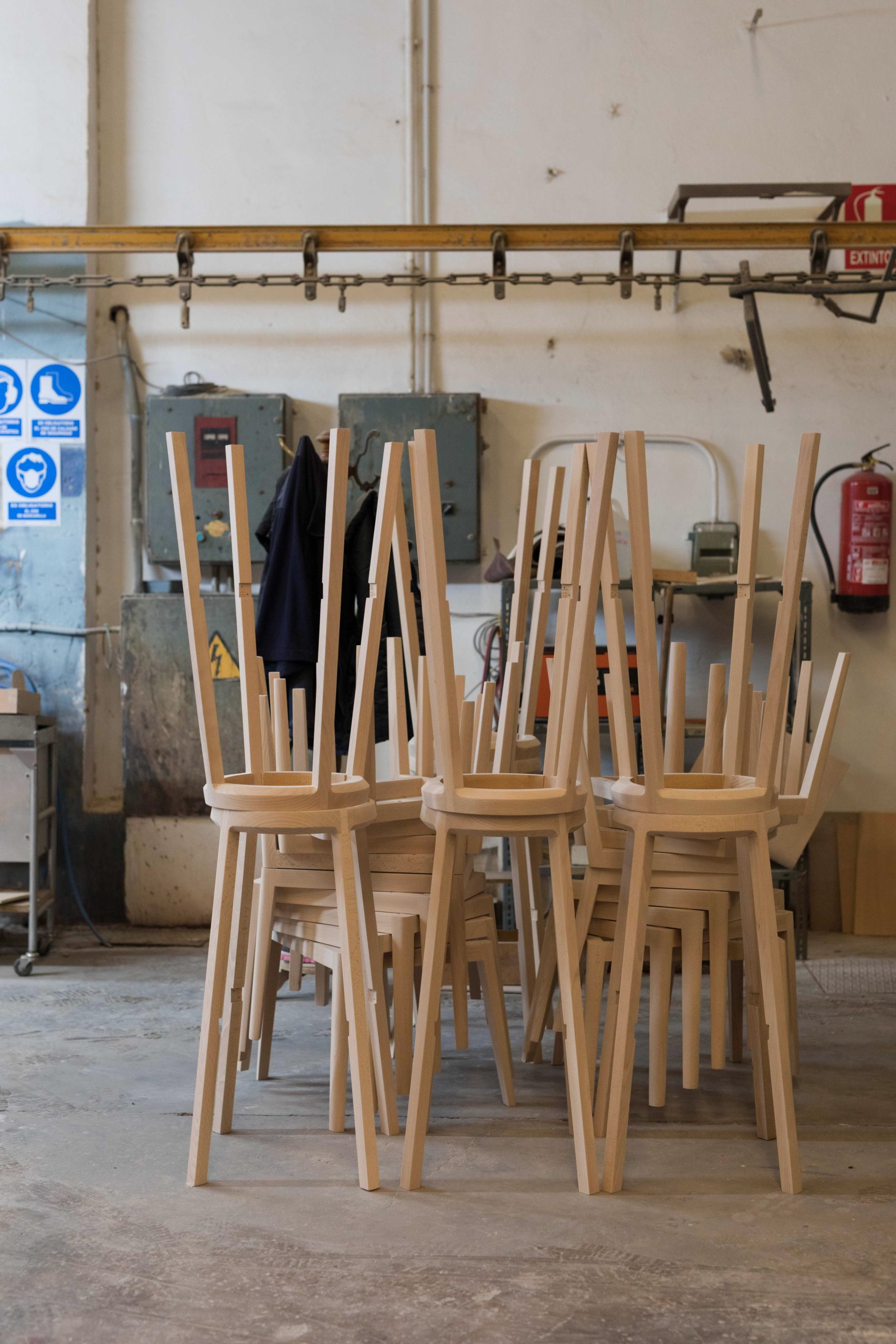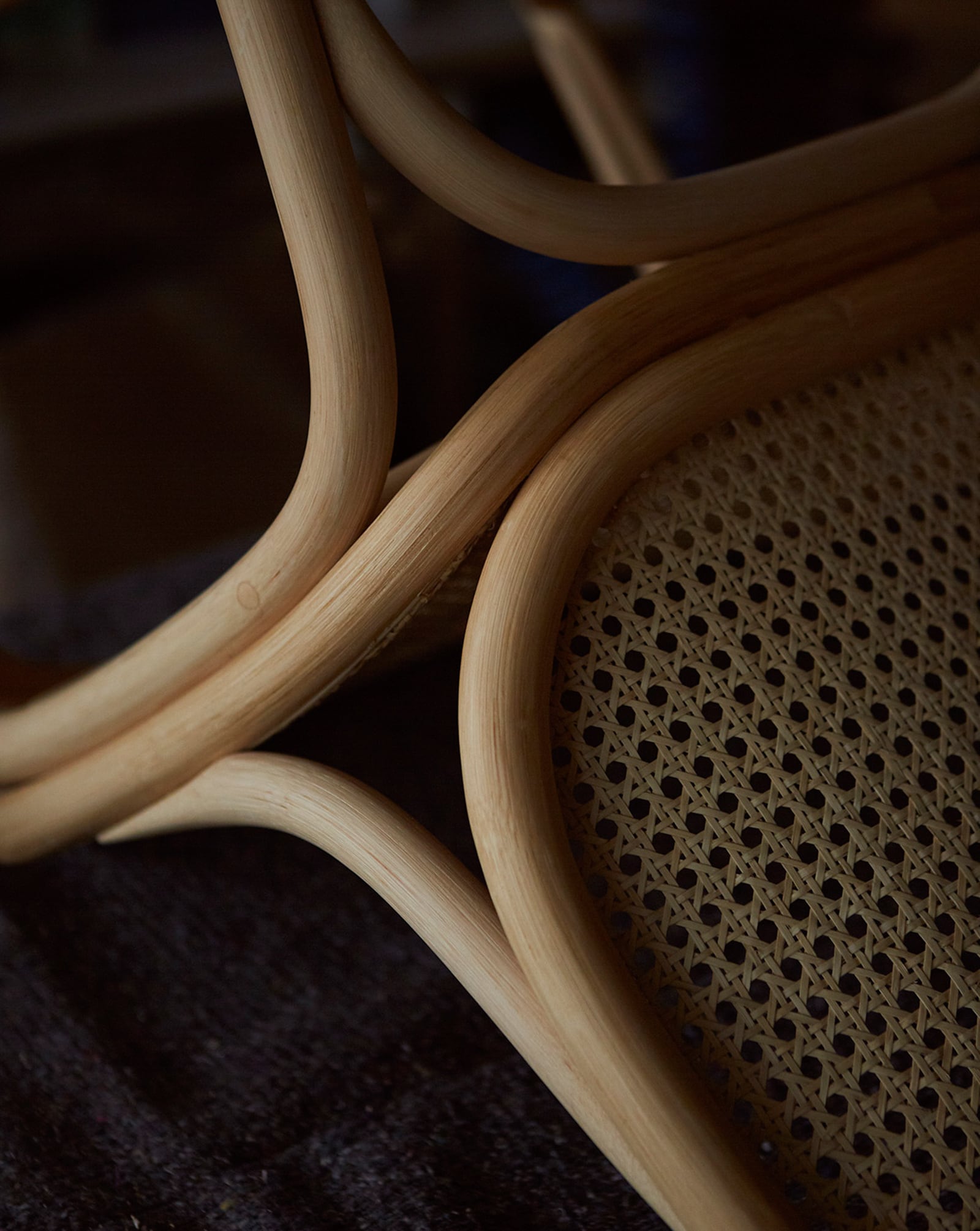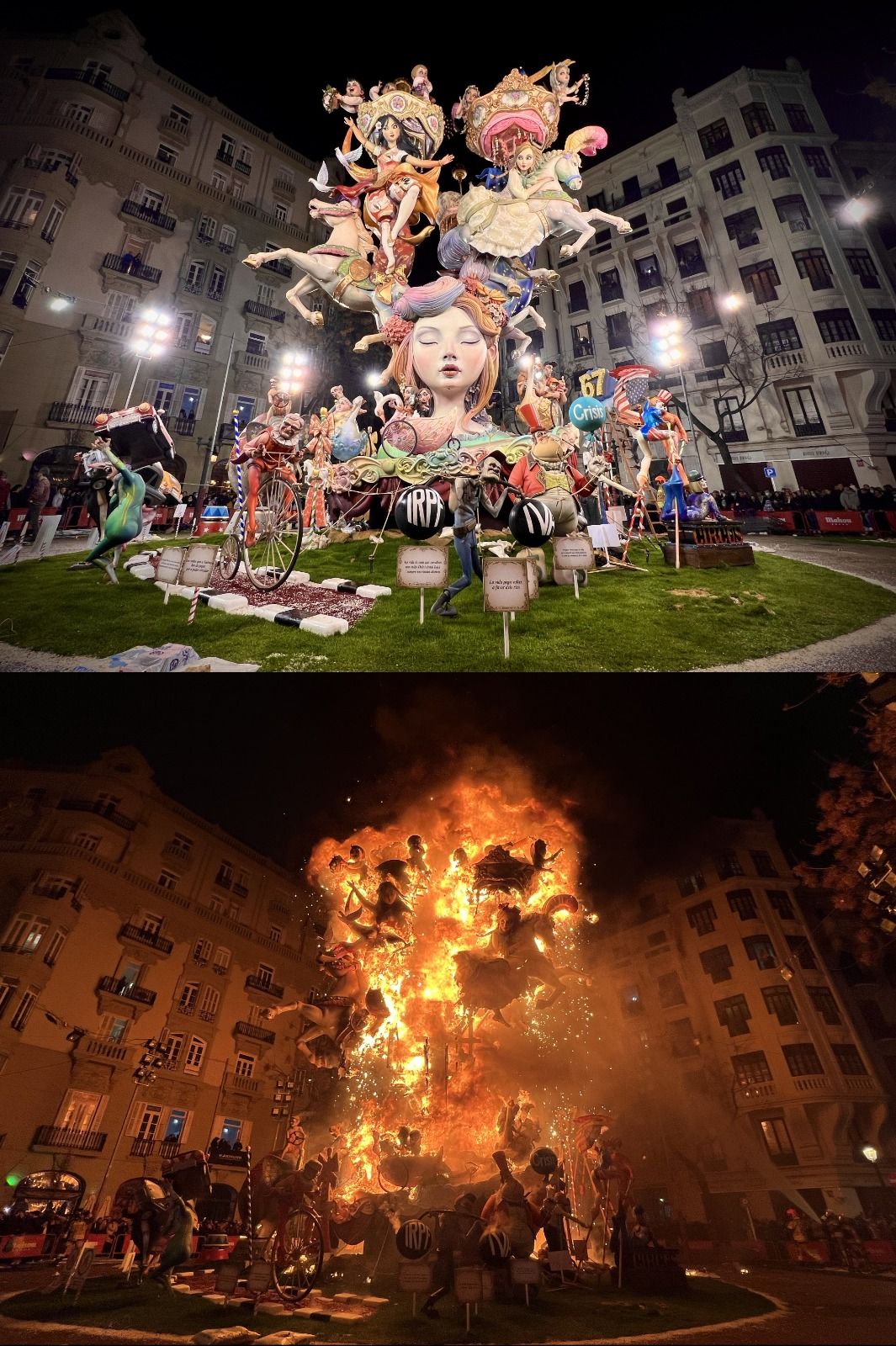How many female architects can you name? The late, great British-Iraqi architect Zaha Hadid (1950–2016) was a formidable character. An architect of outstanding merit, she was revered—Zaha Hadid was without doubt the architectural world’s mighty grande dame. In all probability, she was was the only female architect the general public could name. And her work, often unapologetic, certainly bold and always pushing boundaries, epitomised architecture as spectacle and extravagance.

Zaha Hadid in her London office circa 1985. Photo via Dezeen.
Zaha Hadid was born in 1950 in Baghdad, Iraq. She studied mathematics at the American University of Beirut, before moving to London in 1972 to read architecture at the Architectural Association. Graduating in 1977, Hadid worked with Dutch architect Rem Koolhaas and Greek architect Elia Zenghelis at OMA (she had met both men while at the Architectural Association). Hadid left OMA in order to found the eponymous Zaha Hadid Architects in 1980.

A formidable Zaha Hadid (2013). Photo by David Levene for the Guardian.
Early in her career, Hadid was inspired by St. Petersburg’s avant-garde artists and their pursuance of suprematism (a Russian abstract art movement characterised by simple geometric shapes and associated with notions of spiritual purity). As a student at the Architectural Association, Hadid worked to concretise ideas such as fragmentation and layering. She would use isometric and perspective drawing techniques, practiced as a part of suprematism, to realise irrational spaces, i.e. the development of distorted and dislocated non-rectilinear forms. Hadid’s aesthetic would ‘challenge the inertia of material reality, with dynamic forms subject to visual acceleration and a sense of take-off’ (Giovannini, 2004). Her design for the Vitra Fire Station in Weil Am Rhein, Germany (1990–1993), successfully reimagined suprematist drawings in three-dimensional form, representing ‘movement frozen’ and a ‘structure ready to explode into action at any moment’ (Zaha Hadid Architects).

The Vitra Fire Station in Weil Am Rhein, Germany (1990–1993), was Zaha Hadid’s first major built commission. Photo © Christian Richters via Zaha Hadid Architects.

Vitra Fire Station. Photo © Hélène Binet via Zaha Hadid Architects.
In many ways, Zaha Hadid’s architecture would mark a shift from modernism’s functionalist (Bauhaus) worldview, to an era of complex, almost gravity-defying forms. She would stretch space, distort proportions, mock convention and eschew the normal bounds of reality. Still, her outlandish concepts were difficult to make real; pushing the limits of practicality, they usually came with spiralling costs. Clients who wanted Hadid no doubt realised that cost was not the architect’s top priority. She was, after all, giving them an architectural tour de force that would last for many generations to come. Moore (2016) suggested that Hadid’s ‘eventual success came when her celebrity meant that clients had to accept her on her own terms: either give what it takes to realise a Hadid or go elsewhere.’

The London Aquatics Centre for the 2012 Olympics (2005–2011). Photo © Hufton + Crow.

Interior of the London Aquatics Centre. Photo © Hufton + Crow.
When completed, Hadid’s structures would appear as spectacular, dizzying and overt compositions, challenging our perceptions of the built environment and sparking debate amongst admirers and critics. For example, was Hadid indulging in grandiose notions of self-importance or creating dynamic and liberating spaces? In his 2004 laureate essay on Hadid (for the Pritzker Architecture Prize), the architect and critic Joseph Giovannini contemplated: ‘The aesthetic refinement of her designs, their very beauty, belies the fact that Hadid is committed to cultivating and enhancing the urban environment. Through all the projects, she opens geometries to invite the city into her buildings… [i]n a form of social activism, Hadid builds an invitation to the street into and through her buildings and thereby increases the public ownership of the private realm.’

The Heydar Alijev Center in Baku, Azerbaijan (2007–2012). Photo: Alamy via the Guardian.

The Heydar Aliyev Centre’s auditorium. Photo © Hélène Binet via e-architect.
Hadid was often lambasted, facing prejudice as a powerful and successful woman, born in Iraq and operating in a predominantly male environment. She once asserted: ‘I’m a woman and that’s a problem for some people, I’m a foreigner, and I do work which is not normative, not what they expect’ (Moore, 2016). In her career, Hadid had to contend with numerous controversies and fiascos. The construction of her ill-fated Cardiff Bay Opera House was stopped owing to Hadid’s claims of ‘resistance and prejudice’ and she abandoned plans for Tokyo’s 2020 Olympic Stadium, after her design was scrapped due to soaring costs. Hadid’s Heydar Aliyev Center in Baku was named after Azerbaijan’s former brutal dictator, and had been commissioned by his son—she was accused of colluding with tyranny (Moore, 2016). Hadid also defended her involvement in the building of Qatar’s 2022 World Cup stadium, following the appalling deaths of many migrant workers, believing it was an ‘issue’ for the Qatari government to take care of and not her duty as an architect.

Quintessentially Hadid: the Qatar 2022 World Cup stadium. Photo courtesy of the Supreme Committee for Delivery & Legacy via Dezeen.
Whatever your opinion on the controversies surrounding Zaha Hadid, she was without question a star architect—one of the first so-called starchitects. Her high profile status, ego and glut of sleek, shiny and iconic buildings more than earned her this epithet. A celebrated and prodigious architect, Hadid was the recipient of many awards and accolades. In 2004, she was the first female architect to receive the Pritzker Prize. She won the RIBA Stirling Prize in two consecutive years: in 2010 for the MAXXI Museum in Rome and in 2011 for the Evelyn Grace Academy in south London. On 3 February 2016 (less than two months before her death), the 2016 RIBA Royal Gold Medal was bestowed on Hadid, in recognition of a lifetime’s work. She was the first woman to be awarded this honour in her own right. Receiving the medal, Hadid observed: ‘Part of architecture’s job is to make people feel good in the spaces where we live, go to school or where we work – so we must be committed to raising standards. Housing, schools and other vital public buildings have always been based on the concept of minimal existence – that shouldn’t be the case today. Architects now have the skills and tools to address these critical issues’ (Dezeen).

MAXXI: Italian National Museum of 21st Century Arts (2009). Image © Iwan Baan via ArchDaily.

Another Zaha Hadid classic: the Guangzhou Opera House in China (2010). Image via Dezeen.

Zaha Hadid sparkling in the auditorium of her Guangzhou Opera House in China. Photo: Dan Chung/The Observer via the Guardian.
Zaha Hadid’s body of work may well have been akin to ‘Marmite’. Love it or hate it, both she and her architecture had the power to spark debate and divide opinion. But she rarely, if ever, relented. Hadid was committed to form and fluidity. She was grandiose and pragmatic. She was revered and doubtless feared. She was a trailblazer, but perhaps more importantly, Hadid was unique.

Capital Hill Residence, Moscow, Russia. A home for Russian billionaire Vladislav Doronin. Photo by Daniel Stier via Wallpaper*.

Glasgow Riverside Museum of Transport (2004–2011). Photo © 2016 BAM Construct UK.

Rocco London Gallery (2009–2011). Photo © Hufton + Crow via Zaha Hadid Architects.
Bibliography
Giovannini, J. (2004). The Architecture of Zaha Hadid. [PDF] Chicago: The Hyatt Foundation. Available at: https://www.pritzkerprize.com [Accessed 11 Jul. 2019].
Moore, R. (2016). Zaha Hadid, 1950-2016: an appreciation. [online] the Guardian. Available at: https://www.theguardian.com/artanddesign/2016/apr/03/zaha-hadid-observer-appreciation-rowan-moore [Accessed 11 Jul. 2019].













